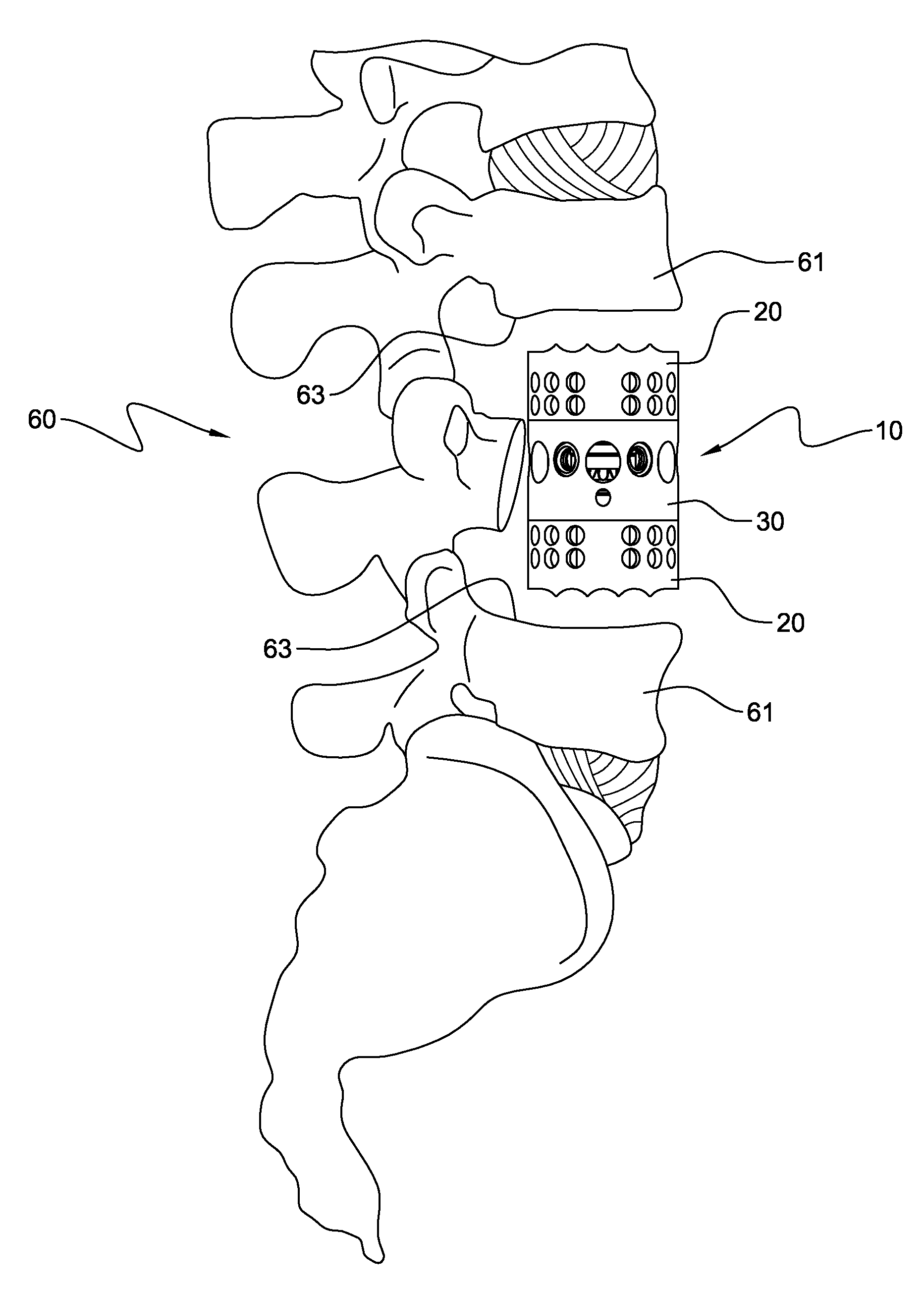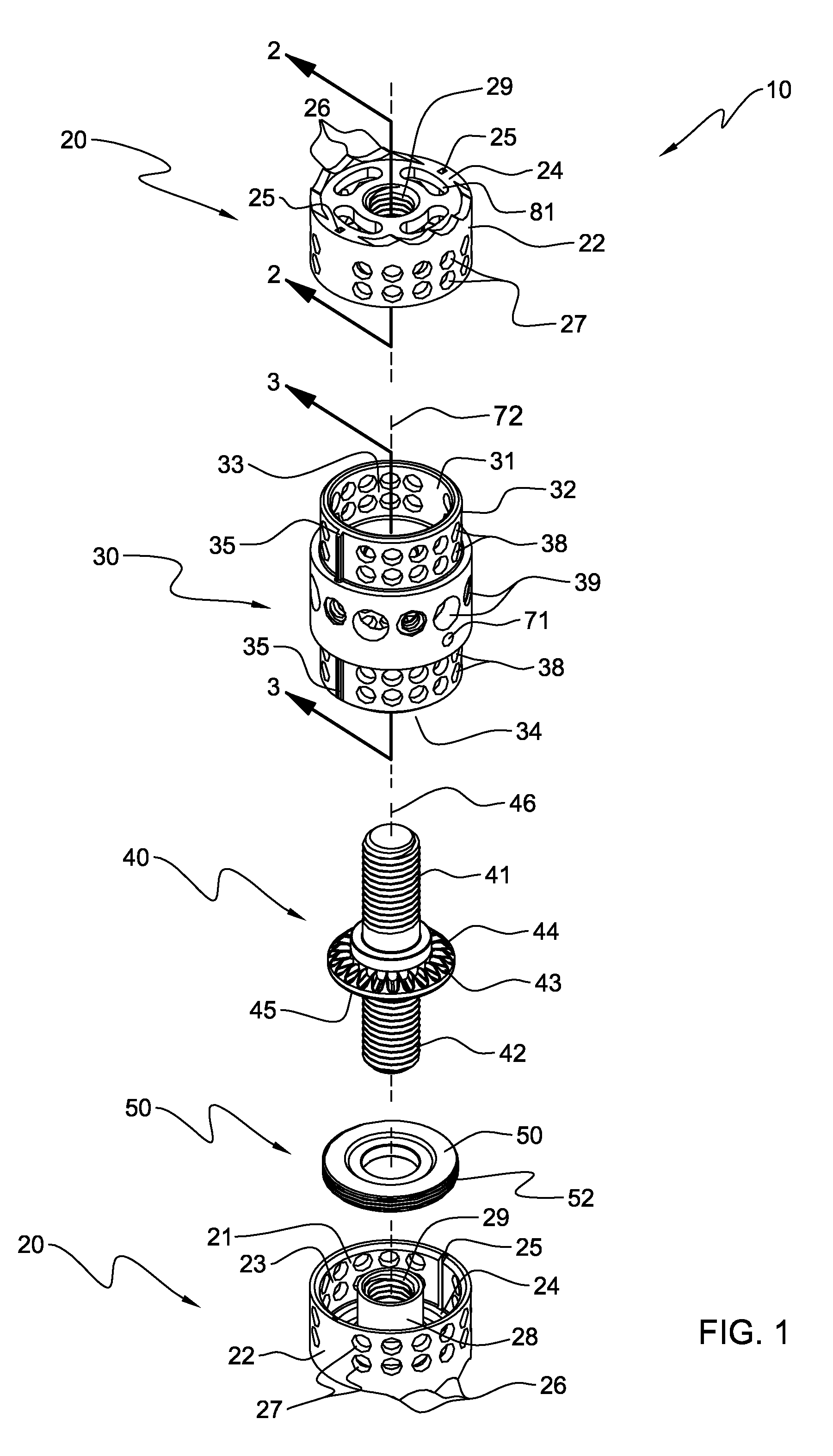Footplate member and a method for use in a vertebral body replacement device
a technology of footplate and vertebral body, which is applied in the field of orthopaedic and neurosurgical implants, can solve the problems of permanent damage to the spinal cord, improper neck and back alignment, and neurologic impairment, and achieve the effect of improving the length and shortening of the device and the vertebral space implan
- Summary
- Abstract
- Description
- Claims
- Application Information
AI Technical Summary
Benefits of technology
Problems solved by technology
Method used
Image
Examples
Embodiment Construction
[0023]Generally stated, disclosed herein is a vertebral body replacement device or vertebral spacer that typically includes a body member, a central rod member, a support ring, two end members and at least one footplate member. As used herein, the terms “vertebral body replacement device” and “vertebral spacer” may be used interchangeable as they essentially describe the same type of implant device. Further, described herein is a surgical method for using the vertebral body replacement device to maintain a space between two vertebral bodies within a patient suffering from a diseased or damaged spinal column.
[0024]As depicted in FIG. 1, the general arrangement of a vertebral body replacement device 10, in accordance with an aspect of the present invention, includes a body member 30, at least two end members 20, a central rod member 40 and a support ring 50. In this detailed description and the following claims, the words proximal, distal, anterior, posterior, medial, lateral, superio...
PUM
 Login to View More
Login to View More Abstract
Description
Claims
Application Information
 Login to View More
Login to View More - R&D
- Intellectual Property
- Life Sciences
- Materials
- Tech Scout
- Unparalleled Data Quality
- Higher Quality Content
- 60% Fewer Hallucinations
Browse by: Latest US Patents, China's latest patents, Technical Efficacy Thesaurus, Application Domain, Technology Topic, Popular Technical Reports.
© 2025 PatSnap. All rights reserved.Legal|Privacy policy|Modern Slavery Act Transparency Statement|Sitemap|About US| Contact US: help@patsnap.com



